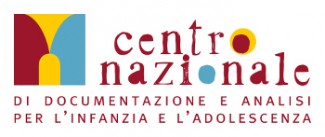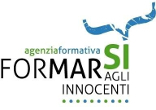History
In favour of the rights of children and their families since 1445
The Istituto degli Innocenti was founded in the 15th century to care for abandoned children. Thanks to a bequest by Francesco Datini, a merchant from Prato, to which the funds of other merchants were added, its construction began in 1419 under the patronage of the Arte della seta (Silk Guild) of Por Santa Maria and was entrusted to Filippo Brunelleschi. Like every other reception centre of the time, it took Ospedale (Hospital) as its name.
In 1445, the Ospedale Santa Maria degli Innocenti began to care for children who were abandoned and left in a basin under the outside loggia. The basin was later removed and replaced by an iron window that was closed in 1875, when a delivery office was set up.
From the very beginning, the Ospedale enjoyed privileges, donations and bequests as well as the assets of other organisations. Until the suppression of the Guilds (1770), it was managed by the Council of Workers, appointed by the Silk Guild. It was then placed under the control of the Grand Ducal Government until the Unification of Italy, with the exception of the period of the French domination (1799-1814) when it was managed together with other hospitals.
In 1862 it became an Opera pia (1) and from 1888 was managed by a Board of Directors. In 1890, with the Crispi Law, it became a public charitable institution, and in 1923, an IPAB - Istituto pubblico per l'assistenza e la beneficenza (Institute for assistance and charity). Since 1940 it has been called Istituto, and in 2004 it became an ASP (Azienda di servizi alla persona - Company providing Care Services).
(1) An 'Opera Pia' is a charitable institution that, according to Law no. 6972 of 17 July 1890), provides assistance to the poor, whether in a state of health or illness, to procure their education, instruction, initiation into some profession, art or trade, or in any other way their moral and economic improvement
Origins
It was a bequest from Francesco Datini, a merchant from Prato, that led to the construction of a large hospital for abandoned children in Florence in 1419. The Silk Guild, the guarantor of the construction and patron of the new institution, entrusted the project to Filippo Brunelleschi who, at the time, was also building the dome of Florence Cathedral. The Ospedale degli Innocenti thus became 'the place of beauty' for abandoned children. Agata Smeralda was the first child to be taken in on 5 February 1445.
On arrival, the children were entrusted to in-house nannies: poor women, often single girls or mothers of children, taken in by the Institute itself. As time went by, the number of external nannies to whom the children were entrusted increased. Wherever possible, children were taken to live in the countryside because it was believed that the climate and the wholesome food favoured the production of good milk, useful for the growth of the waifs.
In the first years of life, their growth and care were entrusted to country wet nurses, who took the children into their homes, nursed them until they were two years old and continued to care for them until they were five or six. Survivors of the high infant mortality rate of the time then returned to the Institute: the boys would attend school and learn a trade and the girls would learn weaving or do domestic work for the wealthy families of Florence in order to earn their dowries that would enable them to marry or become nuns.
From 1600: New Focus on Mothers and Children's Health
Between 1600 and 1700, the Institute began to welcome unmarried mothers among its in-house nurses who provided the initial care for new-born babies, thus initiating a welfare practice for women as well. Later, women began to receive subsidies to help them build a life outside the Institute.
From 1700, attention was also focused on safeguarding children's health by developing specific areas of scientific investigation promoted by distinguished doctors who studied new methods of raising children and treating child diseases. It was at this time that the first experiments in artificial feeding, smallpox prevention and the development of obstetrics and paediatrics began.
The Institute Today
The social and legal transformations that revolutionised Italy from the 1970s onwards also affected the functions of the Institute. Abandoned children decreased in number as did the number of mothers: the Institute's role changed from providing care and assistance to promoting initiatives to improve the living conditions of children and adolescents. The Institute became aware of new needs and started to collaborate with the Italian government, international institutions, bodies and associations that support children, young people and families. In 2004 the Institute became an ASP (Company providing Care Services).
Last update: 04/23/2024 - 12:22





